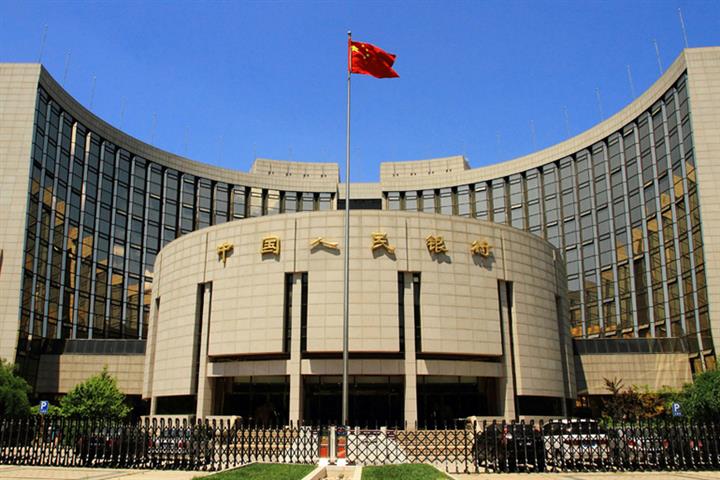 PBOC May Have Hiked Its Chinese Treasury Holdings in July
PBOC May Have Hiked Its Chinese Treasury Holdings in July(Yicai Global) Aug. 13 -- Investors increased their holdings of Chinese treasury bonds by CNY196.5 billion (USD28.3 billion) last month in a record high that has prompted market players to speculate that the People’s Bank of China or its agents may have bought treasury bonds on the secondary market.
The scale of treasury bonds held by "special settlement members" in the inter-bank bond market rose sharply from CNY196.5 billion to about CNY1.8 trillion (USD257.3 billion) last month, according to the latest data released by China Central Depository & Clearing. This far exceeds the monthly CNY10 billion fluctuation range for the past year and a half.
"Special settlement members" include institutions such as the Ministry of Finance, policy banks, and clearing houses, according to CCDC’s classification, but the agency did not specify which institution raised its treasury bond holdings last month.
The data changes result from PBOC buying special anti-Covid-19 treasury bonds issued last month in the secondary market, is the view held by Ming Ming, deputy director of the research institute with CITIC Securities, he told Yicai Global.
The Ministry of Finance issued a total of CNY1 trillion special anti-pandemic treasury bonds from June 18 to July 30.
The central bank’s purchase of bonds on the secondary market can ease the market's concerns about subsequent new government bond issuance to a certain extent, Ming said.
China issued CNY5.43 trillion of various government bonds in the first seven months, and still has about CNY4.08 trillion left to go in the rest of this year, according to its previous annual bond issuance plan. The average monthly net financing scale will be greater than in the first half.
Bonding Pressure
The PBOC can only increase short-end liquidity and buy treasury bonds through the secondary market in the second half when government bond issuance is under greater pressure, Ming stated.
The PBOC’s bond purchase is not quantitative easing, he added. If the central bank does purchase special anti-epidemic treasury bonds through the secondary market, it will not cause a flood of liquidity since the treasury bonds are mainly used for the construction of public health and other infrastructure that guarantees certain asset returns, as well as anti-pandemic expenditures.
The move does not mean the central bank has initiated a new currency release mechanism, Yan Se, chief economist at Founder Securities, told Yicai Global. The bonds are used only in counter-epidemic work during a special period and are irregular. They do not create a base currency or represent quantitative easing.
“The PBOC will release the balance sheet in a few days, and then we will know [whether the buyer is it or not],” Guo Yuwei, macro economy analyst at CIB Research told Yicai Global. The government bonds held by the central bank, mainly special treasury bonds, will be presented in the ‘debt to the government’ item on the balance sheet.
Yicai Global immediately asked the PBOC to verify whether the data changes relate to its bond purchases from commercial banks, and whether it may have bought bonds with foreign exchange reserves and other assets through the investment institutions under the State Administration of Foreign Exchange. The central bank has not yet responded.
Editors: Tang Shihua, Ben Armour